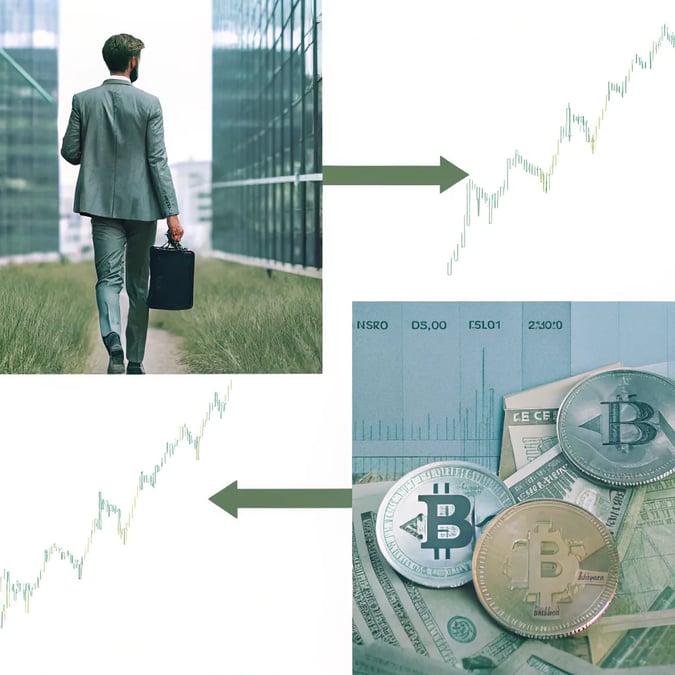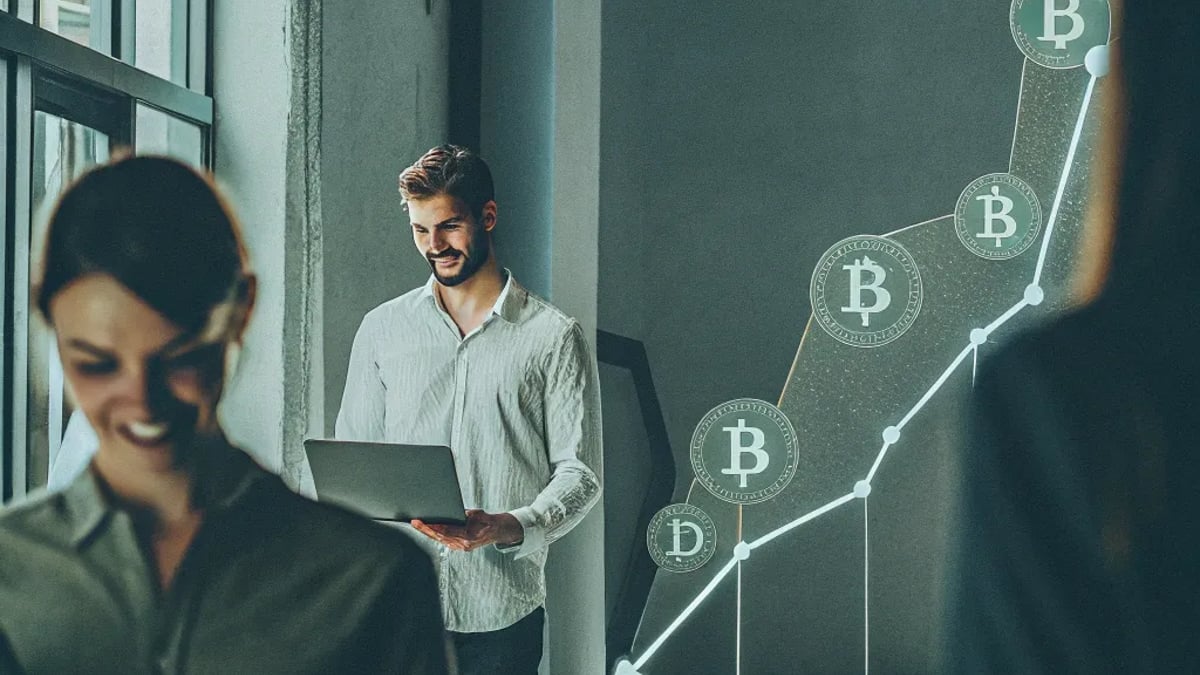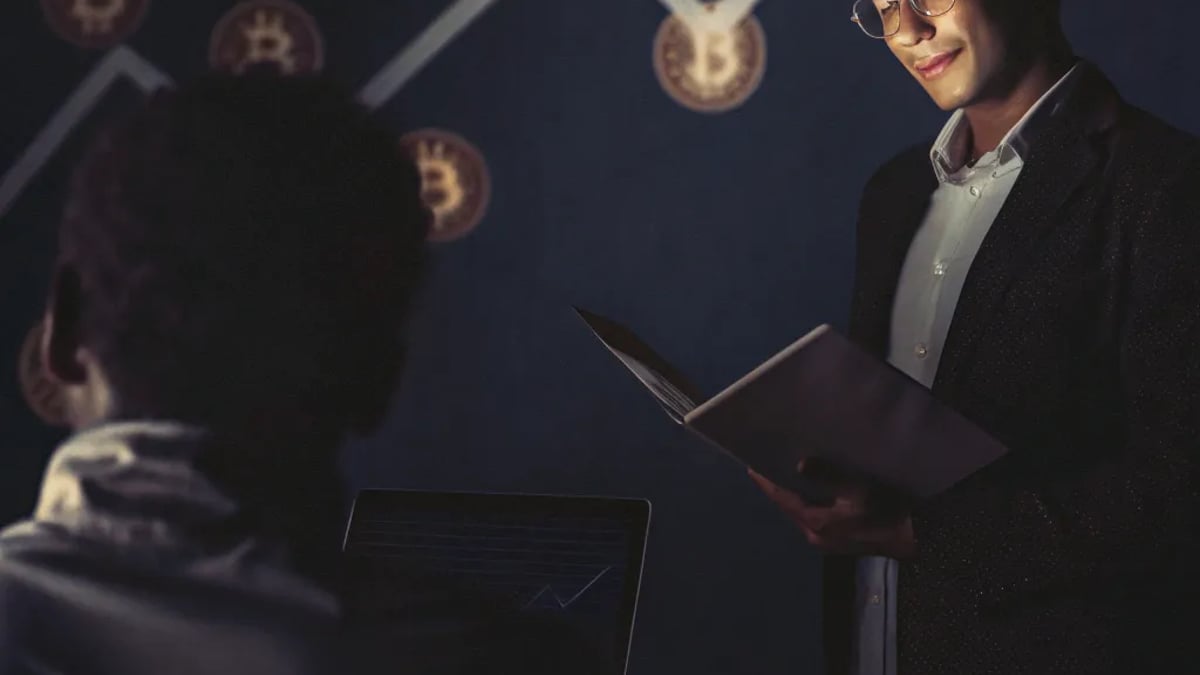
The world of cryptocurrency trading hit me like a tidal wave back in early 2019. I'd been hearing buzzwords like "Bitcoin," "blockchain," and "decentralized finance" swirling around, but honestly? I had absolutely no idea what any of it meant. Fast forward three years, and I've transformed from a complete novice to someone who navigates the crypto waters with genuine confidence.
The Intimidating First Steps
My introduction to cryptocurrency wasn't exactly smooth. I remember sitting at my kitchen table, staring at my laptop screen filled with charts, numbers, and unfamiliar terms like "market cap" and "gas fees." Everything seemed designed to confuse newcomers.
"This is impossible," I muttered to myself, nearly closing my laptop in frustration.
The turning point came when I stumbled across a beginner's guide on Digital Investor, which broke down the basics in plain English. Suddenly, concepts started clicking. I realized I didn't need to understand every technical detail to begin—I just needed to grasp the fundamentals.

Starting Small: My First Crypto Purchase
My hands were literally shaking when I made my first purchase—a modest $50 in Bitcoin. Looking back, that tiny investment was less about the money and more about overcoming the psychological barrier of entry.
I chose a mainstream exchange with a user-friendly interface, verified my identity (a process that took longer than expected), and finally clicked "buy." That moment felt monumental, even though the amount was small.
What I wish someone had told me earlier: Start with amounts you're completely comfortable losing. This isn't just generic advice—it's crucial for maintaining emotional stability when you inevitably see your investment drop 20% overnight.
Learning Through (Expensive) Mistakes
Let me be clear: I've made nearly every rookie mistake possible. Each one taught me valuable lessons, though some were more expensive than others.

My costliest error? Jumping into a small altcoin because of social media hype without doing proper research. I watched it climb 40% in two days, feeling like a genius, only to crash 70% the following week. That $200 loss taught me more about due diligence than any article ever could.
Other painful lessons included:
- Not understanding the difference between limit and market orders (cost me about $30 in unnecessary fees)
- Forgetting to enable two-factor authentication (thankfully discovered before any security breach)
- Attempting to time the market perfectly instead of using dollar-cost averaging
As Bank of America's Better Money Habits resources emphasize, financial education is the foundation of confident decision-making. Each mistake pushed me to learn more, research deeper, and develop a more disciplined approach.
Building a Knowledge Foundation
The crypto learning curve is steep, but breaking it down into manageable chunks made it less overwhelming. I created a structured learning path:
- Understanding blockchain basics and how cryptocurrencies function
- Learning about different types of wallets and security practices
- Studying market fundamentals and technical analysis
- Exploring various trading strategies
- Keeping up with regulatory developments
I discovered that Alerus Financial offered resources that helped me connect traditional financial knowledge with crypto concepts. This crossover understanding proved invaluable.
The Technical Analysis Rabbit Hole
Technical analysis—studying price charts and patterns—initially seemed like reading tea leaves. How could candle patterns possibly predict future price movements?
I started with simple concepts: support and resistance levels, moving averages, and basic chart patterns. Gradually, these tools began making sense as practical ways to manage risk rather than magical prediction methods.
 A basic understanding of chart patterns can help identify potential entry and exit points.
A basic understanding of chart patterns can help identify potential entry and exit points.
What surprised me most was how psychological technical analysis really is—it works partly because enough traders believe in and act on these patterns, creating self-fulfilling prophecies.
Developing My Personal Trading Strategy
After months of learning and small-scale experimenting, I began crafting a personal strategy that matched my risk tolerance and lifestyle. This wasn't copying someone else's approach but building something that worked specifically for me.
My strategy evolved to include:
- Allocating only 5% of my investment portfolio to cryptocurrencies
- Dividing my crypto holdings: 60% in established coins, 30% in mid-caps, 10% in speculative positions
- Setting strict stop-loss orders to limit downside
- Taking partial profits at predetermined levels
- Trading actively with only 20% of my crypto holdings, holding the rest long-term
According to research from EY's financial insights, personalized risk management strategies are crucial for sustainable growth in volatile markets. This principle applies perfectly to cryptocurrency trading.
How Do I Stay Informed Without Getting Overwhelmed?
This question plagued me for months. Crypto news moves at lightning speed, and FOMO (fear of missing out) is real. I eventually developed a balanced information diet:
I follow a carefully curated list of credible crypto analysts on Twitter, subscribe to two industry newsletters, and participate in one quality community forum. More importantly, I've learned to recognize and ignore the noise—the shilling, the unfounded predictions, and the constant urgency to act.
The FDIC's approach to financial information taught me valuable lessons about evaluating sources critically. While the FDIC doesn't directly cover cryptocurrency, their principles of seeking verified, balanced information from reputable sources translated perfectly to my crypto journey.
I check prices once daily, not obsessively, and make most decisions based on predetermined plans rather than emotional reactions to market movements.
The Psychological Game
If there's one aspect of crypto trading that's underappreciated, it's psychology. The market's extreme volatility tests emotional resilience like nothing else.
I've learned to recognize my psychological patterns:
- The temptation to chase pumping coins out of FOMO
- The urge to panic sell during sharp declines
- The tendency to overtrade when bored
- The dangerous feeling of invincibility after several successful trades
Developing emotional discipline hasn't been easy. I practice mindfulness techniques before making any significant trading decision and maintain a trading journal that records not just what I traded but why and how I felt.
Where I Stand Today
Three years into my journey, I'm neither a crypto millionaire nor a disillusioned skeptic. I'm something more valuable—a confident participant who understands both the potential and risks of this emerging asset class.
My portfolio has weathered multiple bull and bear cycles. I've seen investments multiply several times over and others crash to near zero. Through it all, I've maintained financial stability by never risking more than I could afford to lose.
The knowledge I've gained extends beyond cryptocurrency into traditional finance, technology, and even global economics. Understanding blockchain has changed how I think about money, value, and financial systems.
Looking Forward
The cryptocurrency landscape continues evolving at breakneck speed. NFTs, DeFi, Web3—the innovation never stops. Rather than trying to master everything, I focus on understanding fundamentals while staying curious about new developments.
My approach now is balanced and sustainable. I continue learning, adjusting my strategy as the market and my own circumstances change, and maintaining perspective about cryptocurrency's place in my overall financial picture.
For those starting their own crypto journey, remember that confidence comes not from knowing everything but from having a solid process for making decisions amid uncertainty. Build knowledge steadily, practice prudent risk management, and develop emotional resilience.
Disclaimer: This article shares my personal experience and should not be considered financial advice. Cryptocurrency investments involve significant risk, including the potential loss of principal. Always conduct your own research and consider consulting a qualified financial advisor before making investment decisions. Cryptocurrency assets are not generally covered by government financial protections like those provided by the FDIC for bank deposits.
Tags

About Elena Schwarzkopf the Author
Elena Schwarzkopf is a seasoned finance writer with over a decade of experience in crafting actionable budgeting tips that help individuals regain control over their finances. Known for her practical approach, Elena's insights empower readers to transform their financial habits and achieve their savings goals.
Recommended Articles
How to Begin Planning a Basic A6C Strategy
Learn how to effectively plan a basic A6C strategy with six key elements for aligning your organization's long-term goals.
The most damaging habit in your baby’s first year is not screens, sleep training, or formula. MRI scans show it shrinks the part of the brain that controls emotional safety and 94% of parents do it
Discover the most damaging habit in your baby's first year that impacts emotional safety, as revealed by MRI scans. Learn how to improve your parenting.
Mentally strong children are not born resilient they are raised by parents who avoid these 10 common mistakes
Learn to raise resilient children by avoiding 10 common parenting mistakes that hinder their emotional growth and mental strength.
PSA Levels: Effective Tips for Lowering Them Naturally
Discover effective tips to lower PSA levels naturally. Learn how diet, exercise, and lifestyle changes can promote prostate health.
How Estrogen Blockers Affect the Body
Explore how estrogen blockers impact hormonal balance, bone health, and overall well-being for both men and women. Learn about their uses and side effects.




